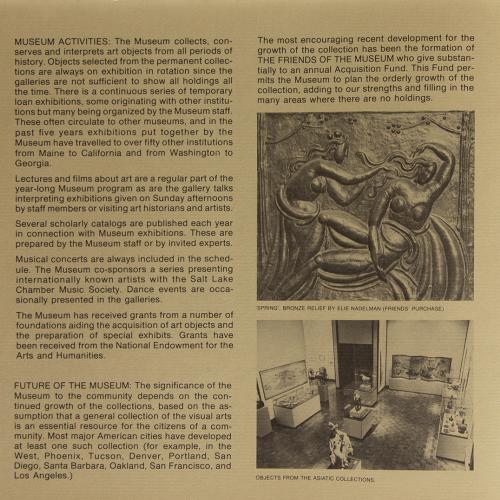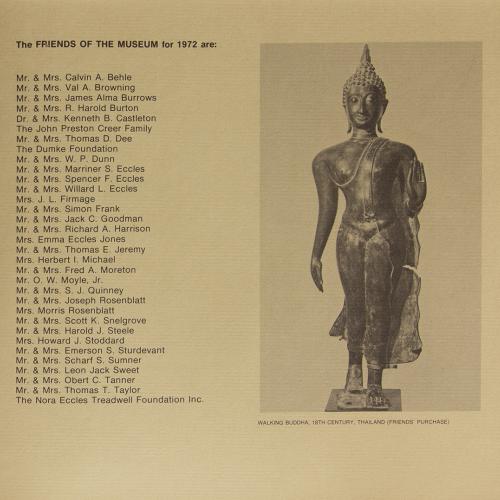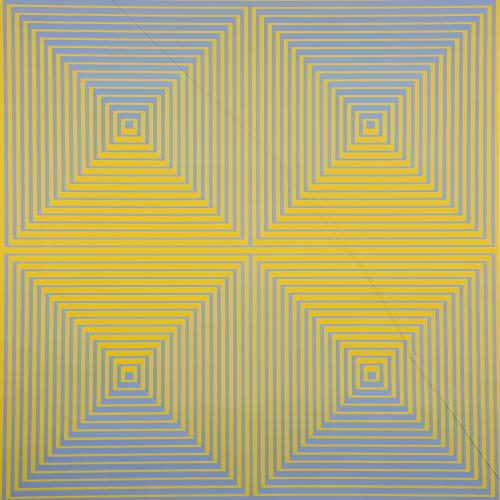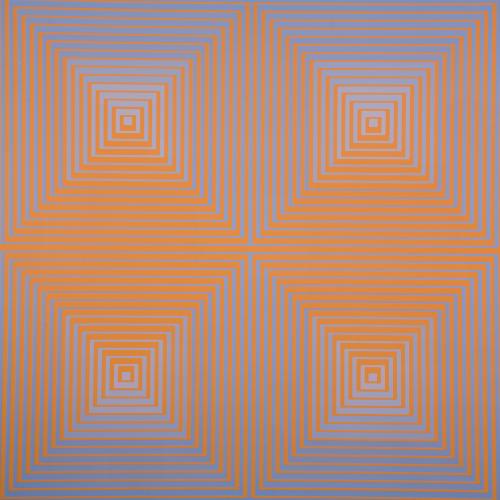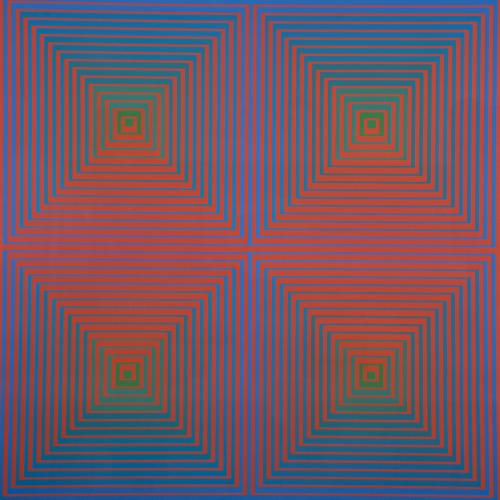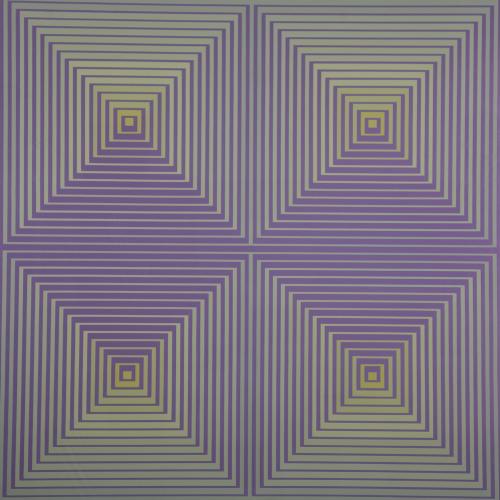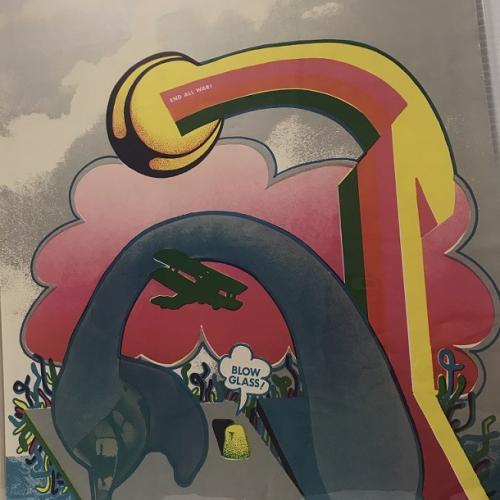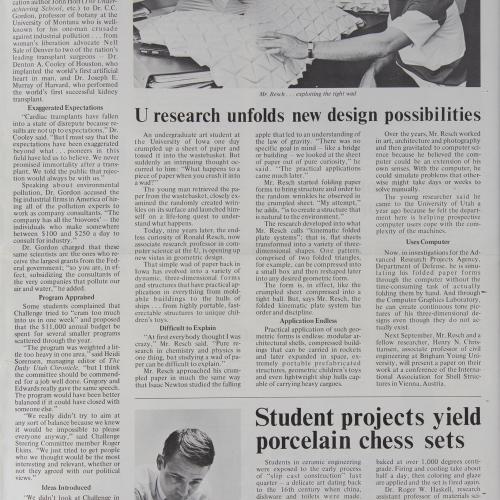Going from Void to Void: Growing the UMFA

The ideal situation is that in which a donor or donors provide annual funds for the systematic acquisition by professionals of a general collection. Such a collection would affect the cultural life of the state through generations of citizens.
–University of Utah Museum of Fine Arts exhibition brochure, 1971-72.
The museum spreads its surfaces everywhere, and becomes an untitled collection of generalizations that immobilize the eye.
– Robert Smithson, “Some Void Thoughts on Museums,” Arts Magazine, February 1967
In 1968, Frank Sanguinetti was recruited as Director of the Utah Museum of Fine Arts to shepherd the institution’s move to modern quarters in 1970. Within two years at its new address, the UMFA became the first museum in the West to receive accreditation from the American Association of Museums.
In its freshly completed concrete galleries, the UMFA exhibited rising and established contemporary artists as well as antiquities and works from Renaissance and Impressionist masters. A 1972 brochure proclaimed the Museum's function at its new site: "to provide essential cultural and educational resources in the visual arts for the University, for Salt Lake City and the entire state. The goal of the Museum collections and exhibitions is to present a general collection of art objects selected for quality and representing the principal artistic styles of many cultures and historical periods."
The Associated Students of the University of Utah, or ASUU, were one of the most influential student-led organizations on campus. One little-known aspect of their history is that the organization sponsored art acquisitions in the 1970s; these works remain in the collection of the Utah Museum of Fine Arts today.
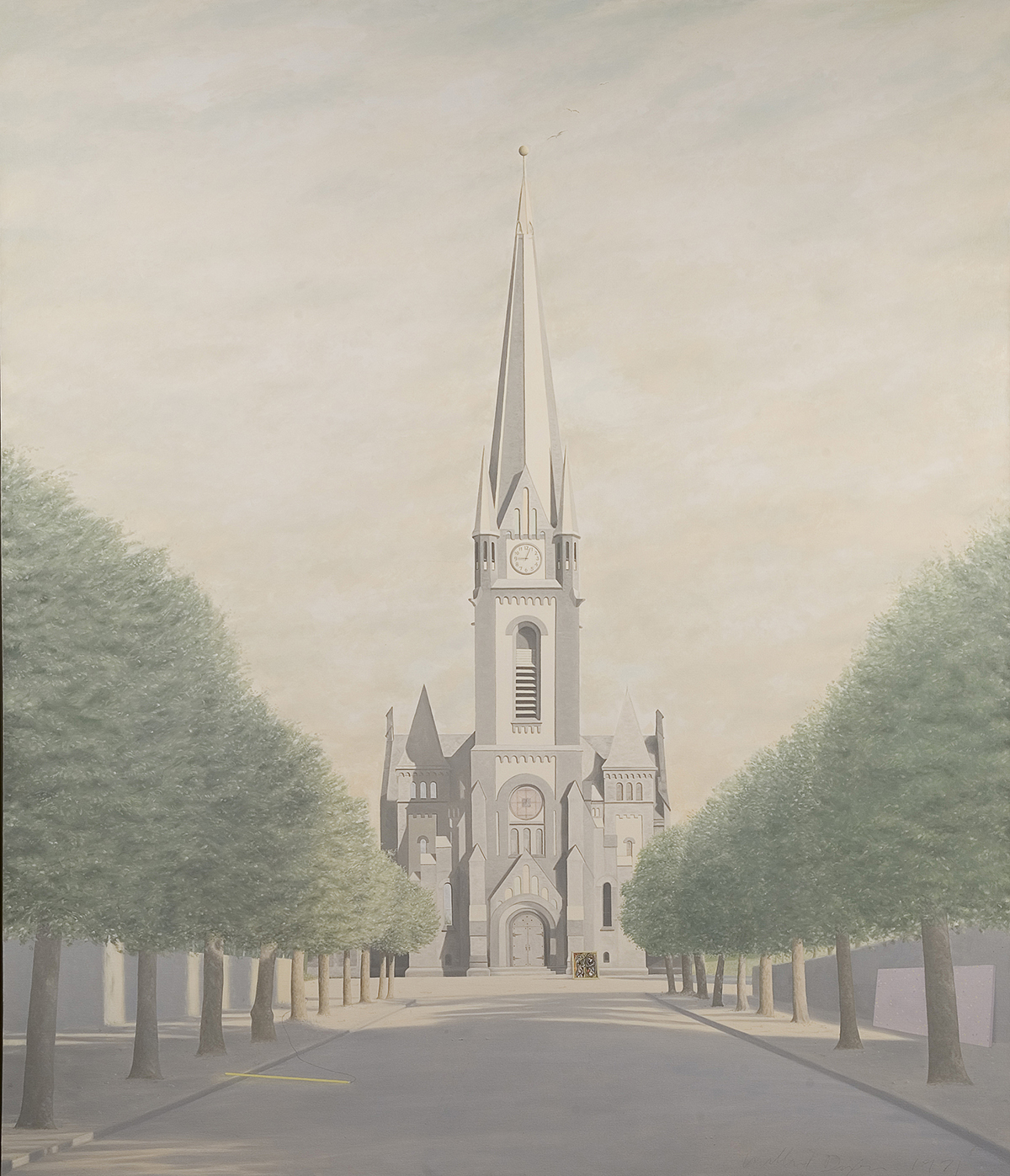
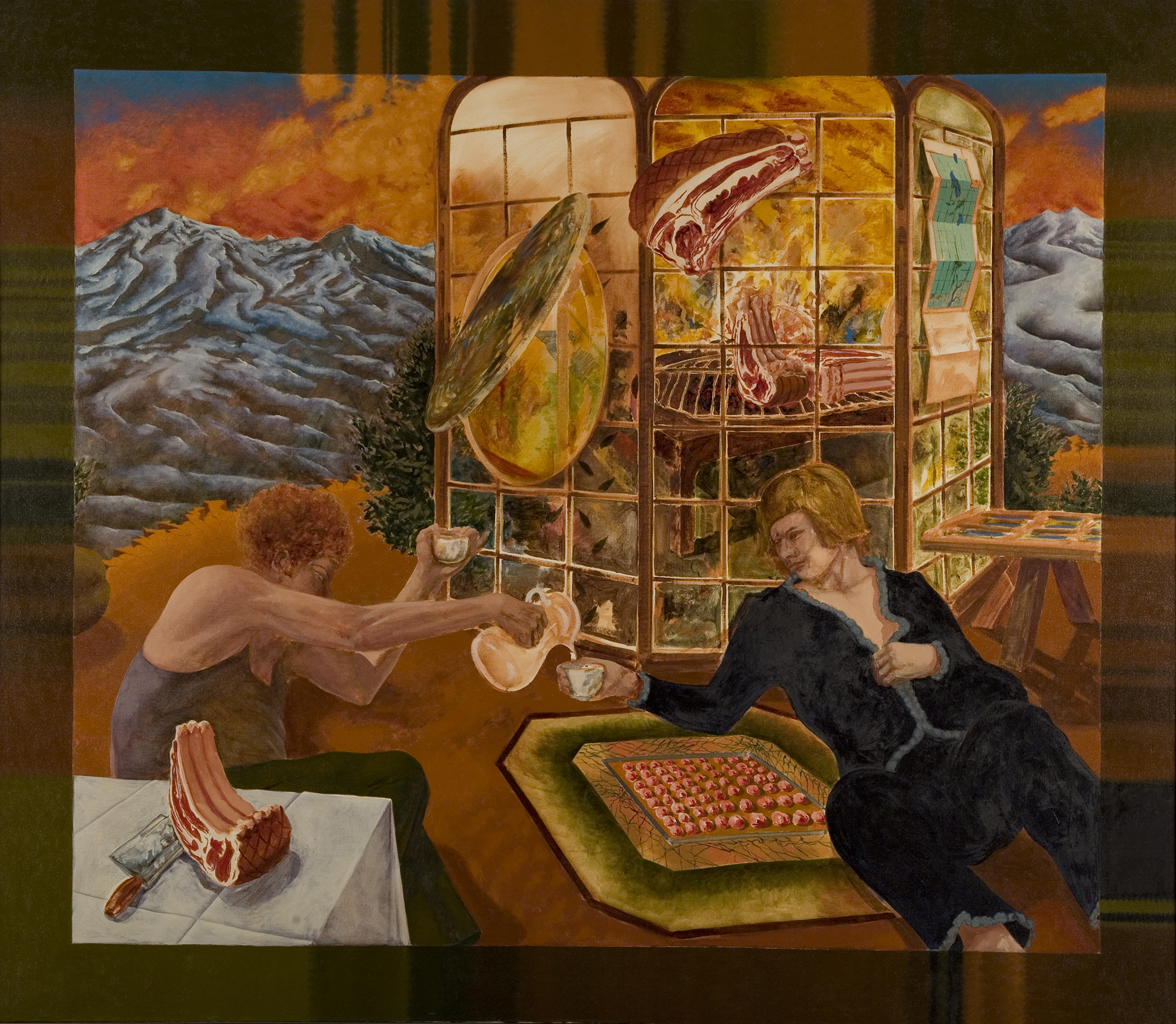
Questions for Closer Looking
Find works on this page and while searching the UMFA's collections database that have “Associated Students of the University of Utah” on their labels. These are all artworks that the University of Utah student organization helped to purchase.
Can you imagine why students believed that the Utah Museum of Fine Arts ought to bring these artworks into their permanent collection?
How do these compare with artworks that the UMFA has acquired more recently
What sorts of artwork do you think today’s students might want the UMFA to collect, and why?
A Complex of Interlocking Forms: Campus Arts and Culture at the University of Utah
Going from Void to Void: Growing the UMFA
Utah on a Turning Globe: Campus of Discontents
A Limited Closed System: Science, Technology, and the First Earth Day
The Will to Respond: Arts and Culture Answer Back
Time Trip Resources

